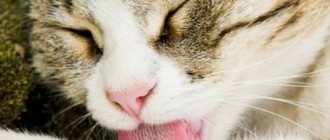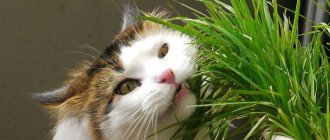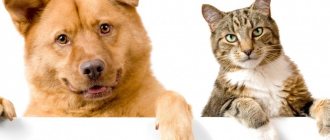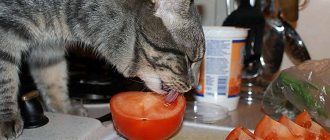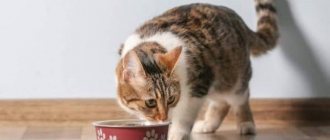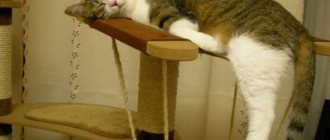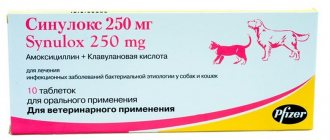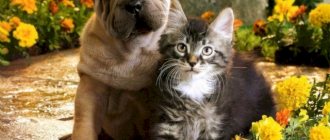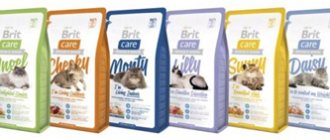The love for furry four-legged pets often coexists with a passion for all kinds of homemade greens. Just remember that not every plant is suitable for animals. Even if the flower itself is recommended by experts as safe, the pests that have settled on it or the spraying and feeding agents used can cause serious allergies or other diseases.
We offer a list of plants that will not harm your animals and at the same time look great in the interior or in the local area.
Palms (Arecaceae)
There are several species in the palm family that are completely safe for dogs or cats in contact with them: Chamaedorea elegans, Beaucarnea. But the Japanese cycad (Cycas revoluta) is very toxic. When interacting with animals, he seems to be a rather aggressive irritant.
Bamboo
Of all the bamboos, preference should be given only to the decorative variety Phyllostachys aurea. Other species can also be raised in homes where dogs live. But you should be careful with cats. For them, dracerna (Dracaena sanderiana), popular among flower growers, or the sacred Nandina bamboo are quite toxic.
Catnip is like a cat's pheromone happiness
Another cult that is relatively safe for cats is the iconic catnip. We can grow it for your pet in a pot, just like oats. However, we must first check whether our protégé responds well to it, because some cats exhibit various unusual behaviors after exposure to catnip (for example, falling on their back, meowing loudly, calling for affection, jumping, running, drooling or becoming excessively excited).
The reason for the rapid reaction of animals to the aroma of catnipifera is contained in plant essential oils and chemicals (mainly nepetalactone), which exhibit an effect similar to cat "happy pheromones".
Animals' response to cat fly, however, is an individual and hereditary matter. Some cat cats are completely uninterested, others treat them like any other plant, and still others start going crazy (about 2/3 of all cats).
If we determine that catnip is designated for our cat, we can successfully pot it, placing it in an area accessible to the animal.
With cats, you can safely grow herbs such as basil, oregano, thyme or dill. Rice. Leo_65 — pixabay.com
Chlorophytum comosum
Chlorophytum is often also called a spider or airplane plant due to the fact that housewives try to hang it somewhere higher. The drooping stems of the herbaceous bush hang spectacularly, do not require special care and do not need frequent watering. And for cats and dogs they do not pose the slightest danger, rightfully occupying a high place in our rating.
Hibiscus
Beautifully flowering hibiscus can not only be a magnificent garden decoration, but also a compact indoor plant - most often in indoor floriculture, the species called the “Chinese rose” is used. Over the past few decades, many colorful varieties have been developed. Scarlet, white, pink, yellow, orange, as well as two-color huge hibiscus flowers with delicate thin petals will not leave any gardener indifferent.
This plant is fast growing, loves a lot of diffused light, frequent spraying (water should not get on the flowers!) and abundant watering. The optimal growing temperature is 20-23°C in summer and 14-17°C in winter. Hibiscus easily forgives small errors in care for beginning flower growers.
In the East, this plant is considered a guardian of the home, and hibiscus flowers can also be eaten - they can be fried in batter with cheese and breadcrumbs, added fresh to salads, or decorated with desserts and drinks.
- Flowers you can eat
9 plants from the flowerbed that can be added to a salad, pickled, stewed or placed on a cake as a decoration.
Cast iron flower (Aspidistra elatior)
Aspista is a Japanese plant that enjoys the reputation of being “unkillable.” In an open area, the large half-meter leaves of the bush provide luxurious shade in which pets love to hide from the heat. An excellent option for owners who prefer to tinker with their pets rather than care for their plants.
Ferns (Nephrolepis exalta bostoniensis)
There are about 30 different types of Boston ferns, suitable both for growing in pots and for hanging in decorative flowerpots. Notable for its rosette of large leaves on a short stem. Pairs perfectly with any decor and is pet-neutral.
Haworthia succulents
There are species in the Haworthia family that are very similar to Aloe vera. Only, unlike the latter, they are completely safe for the four-legged inhabitants of the apartment and can be in close proximity to them. But it is best to keep the Aloe vera plant away from cats and dogs. Its medicinal properties are beneficial to humans, but they are harmful to animals.
Is lavender poisonous to cats?
Lavender adorns many gardens, but it can also be grown indoors. It is distinguished by its purple color and unusual aroma that repels mosquitoes. Do you want to start growing this plant and wonder if lavender is dangerous for your cat?
Opinions about this flower are divided. Some sources mention that lavender is poisonous to cats and consuming it can cause nausea, vomiting and lack of appetite. The scent of purple flowers is often recommended as a repellent. On the other hand, it appears to be a scent additive for gravel and collars used to relieve stress in cats.
The lack of reliable sources means you must make decisions on your own, which can be risky. Inhaling the scent of lavender should not cause any symptoms in your cat, but consuming it regularly may be harmful. As often happens, too high a dose makes the species toxic.
- The answer to the question of whether lavender is poisonous to cats is unclear. Some sources confirm that the purple flower can cause vomiting and loss of appetite, but the scent has been found in products intended to "purr", such as pheromone collars.
It is recognized that lavender flowers can cause symptoms of poisoning in cats.
Pilea (Pilea peperomioides)
Because of its round leaves, Pilea pipiromiiformis is often called a UFO or pancake bush. There is a belief that this plant filters negative energy, gives positive emotions and even attracts prosperity. Hence another name - “money tree”. In any case, dogs and cats will not get poisoning or stomach upset from Pilea. This flower can safely be in the same room with them.
Yucca
Yucca is a fairly large houseplant that is popular because it is easy to grow, beautiful in appearance, and has low requirements. You will recognize it by its trunk, overgrown with leaves arranged in a trail. Are you wondering if yucca is poisonous to cats? Unfortunately, yes, so if it decorates your home, get rid of it as soon as possible.
Until recently, it was believed that only garden yucca was harmful to cats, but it turns out that the house plant is also toxic. The dangerous ingredient is saponins. Ingestion of this plant by a cat can lead to vomiting, which in turn leads to dehydration, which is extremely dangerous.
- Yucca is dangerous for cats because of its saponins. Ingestion of the plant may cause vomiting, and it will dehydrate your pet.
Fragrant herbs
Since the trend of growing “green vitamins” on windowsills is gaining popularity in the world, it is also impossible to avoid this topic. Feel free to plant sage, thyme, rosemary or basil. They will not harm the animals in any way. But the common parsley and dill are unwelcome guests. If they are present in the home garden, care should be taken to ensure that pets do not have access to these plants.
When deciding to purchase new flowers that your animals will come into contact with, you should first consider them not from an aesthetic point of view, but from a safety point of view. Many popular plants can pose a threat to the health of the four-legged inhabitants of the house. If a dog or cat has eaten juicy greens and begins to show signs of illness (vomiting, diarrhea, discharge from the eyes, mouth, nose), immediately seek veterinary help.
Urgent consultation can be obtained online on the Litbro website. It is possible that this will save the life of your four-legged charge.
Poisonous plants for cats - what symptoms occur after ingestion?
Potted plants make a home feel cozier and the layout more interesting. However, visual considerations are not the most important thing, especially if you have a cat - it turns out that flowers can be very harmful to your pet. Do you think that your cat is not interested in plants, so they can be left out of the house? This is incorrect thinking because for some plant species, just trying a small amount once is enough to cause irreversible changes in the small organism.
Poisoning from toxic plants causes drooling, diarrhea, lethargy, abdominal pain, lack of appetite, seizures and even death. A bite from the plant may cause immediate symptoms or lead to poisoning only after some time. Dangerous plants cause the cat’s kidneys to work worse and worse, and the heart has an abnormal rhythm. Therefore, do not take risks and check all the plants that you have at home, and in this way you will protect your pet from poisoning.
Symptoms of toxic plant poisoning:
- salivation,
- diarrhea,
- abdominal pain
- lack of appetite
- convulsions,
- no desire to play
- kidney or liver weakness
- acceleration or deceleration of heart rate.
Some indoor and garden plants are very poisonous to cats.
